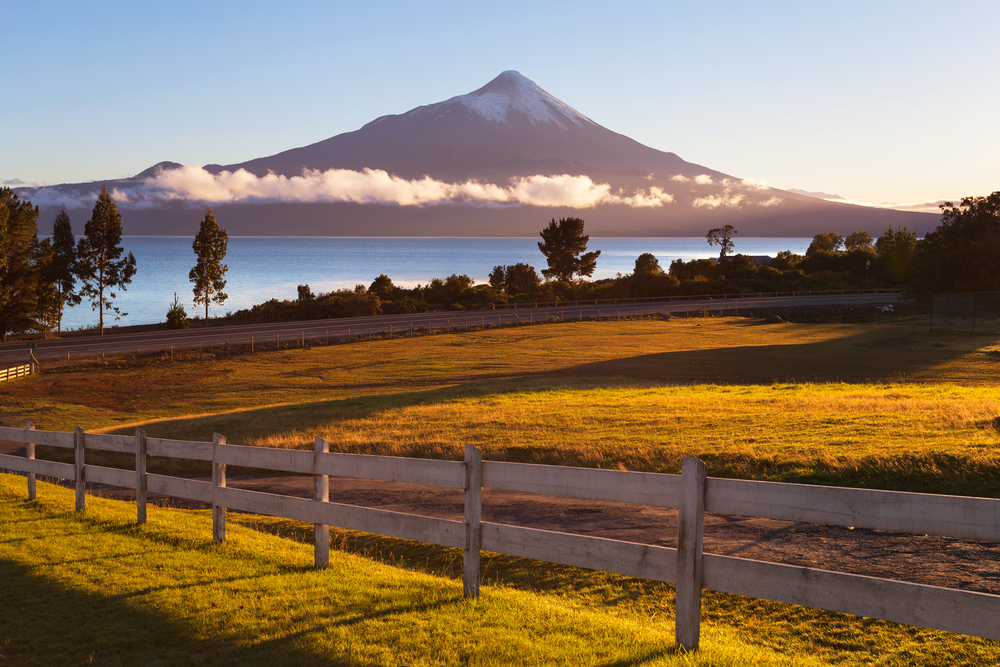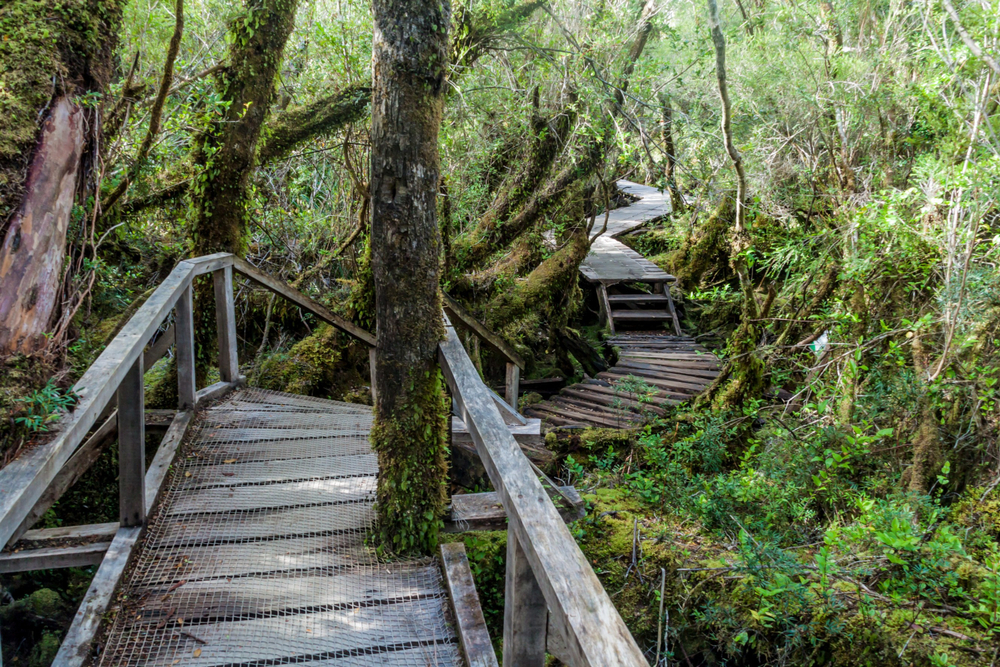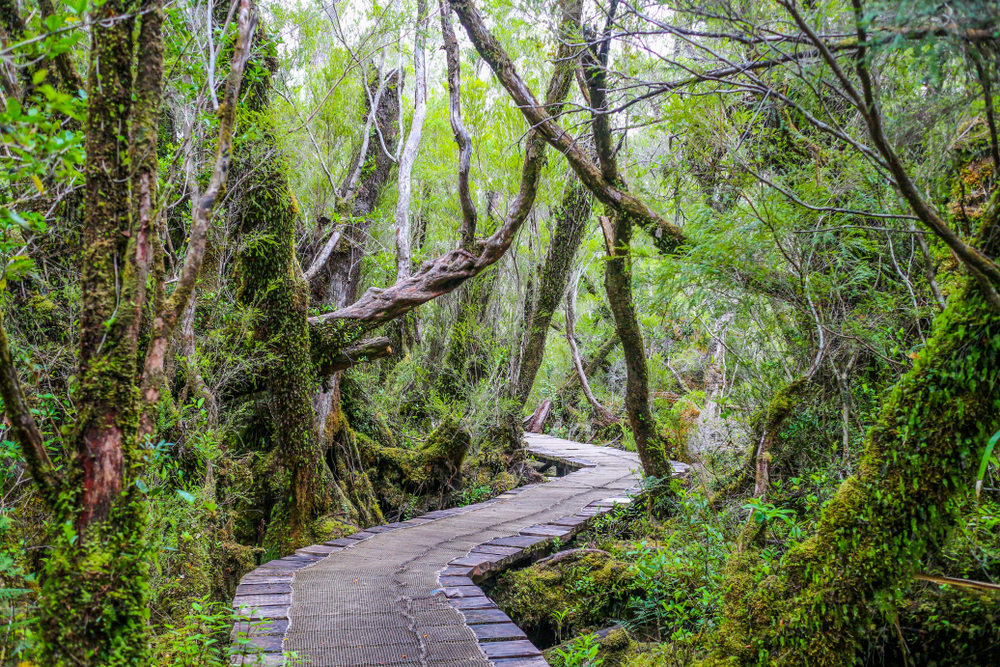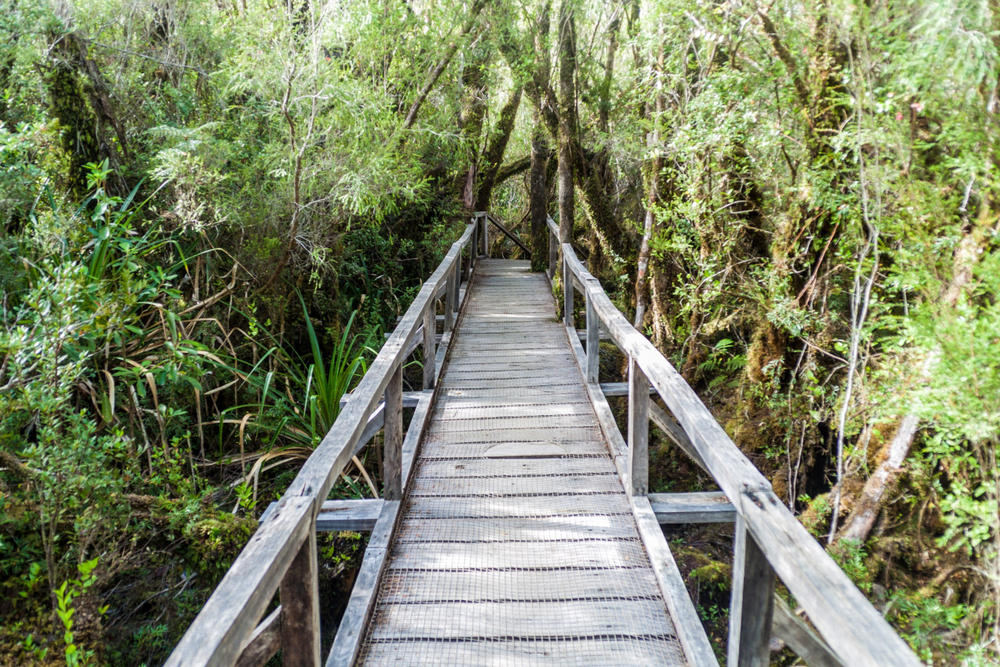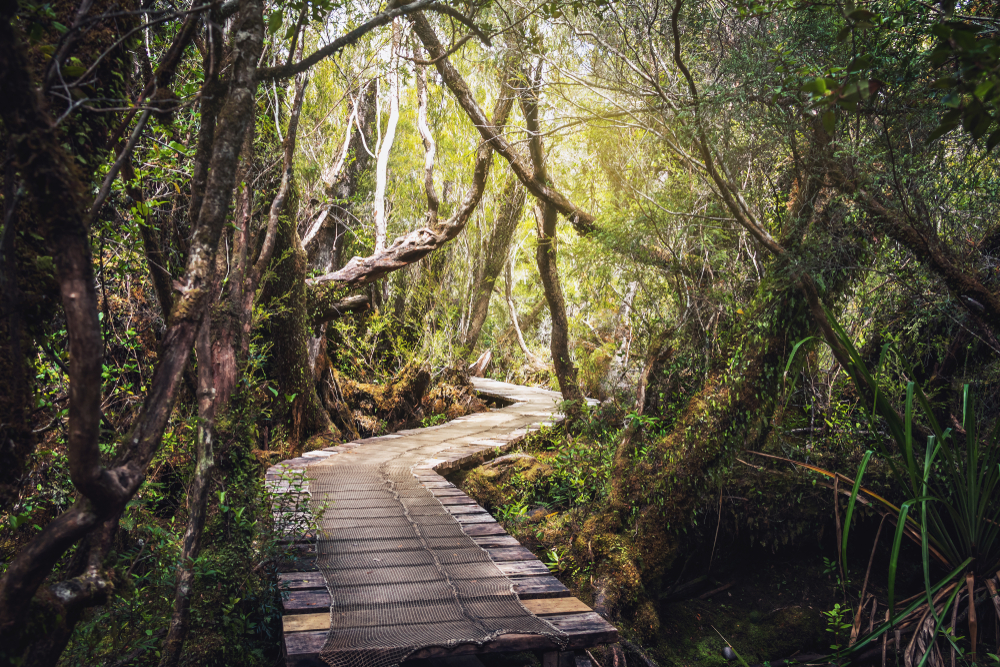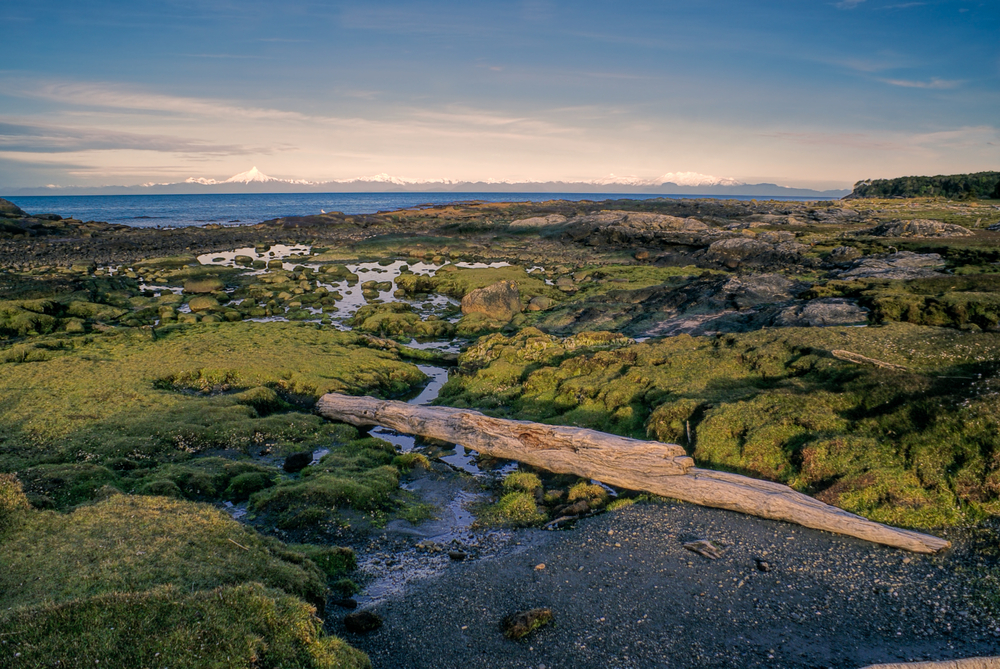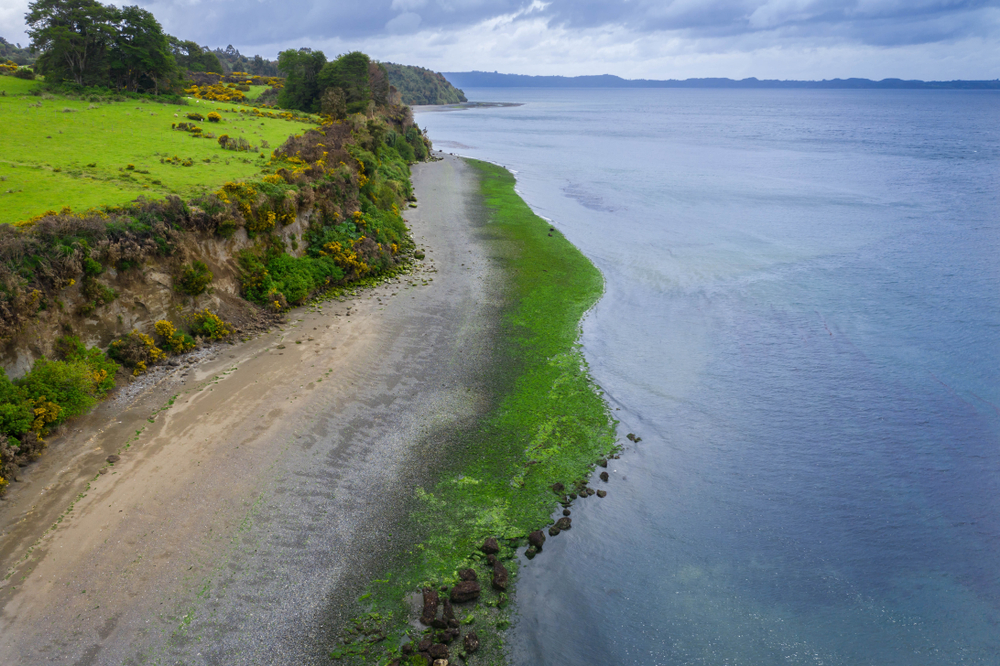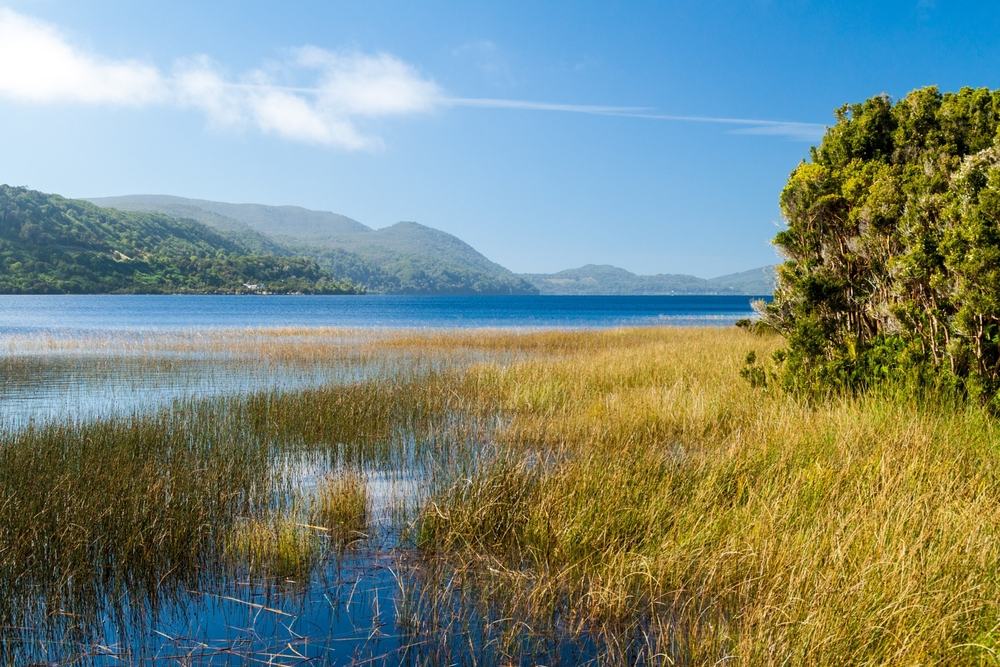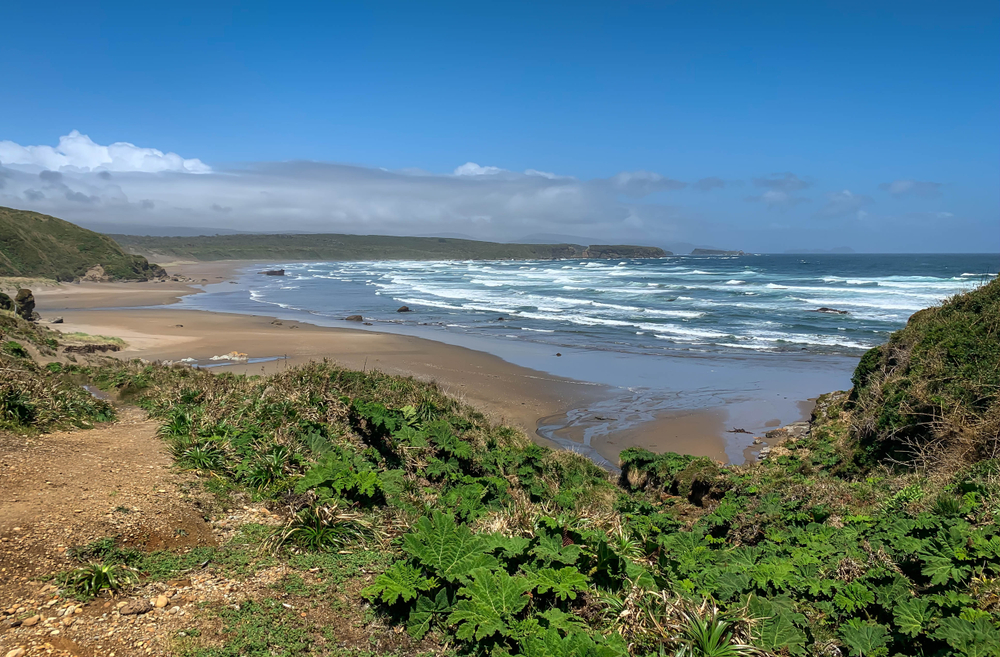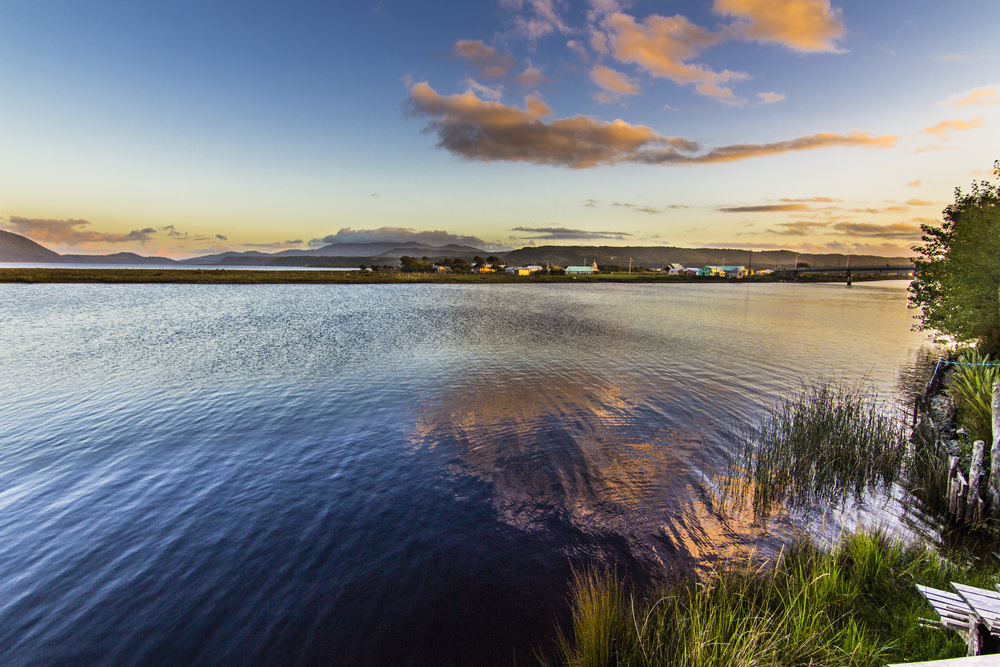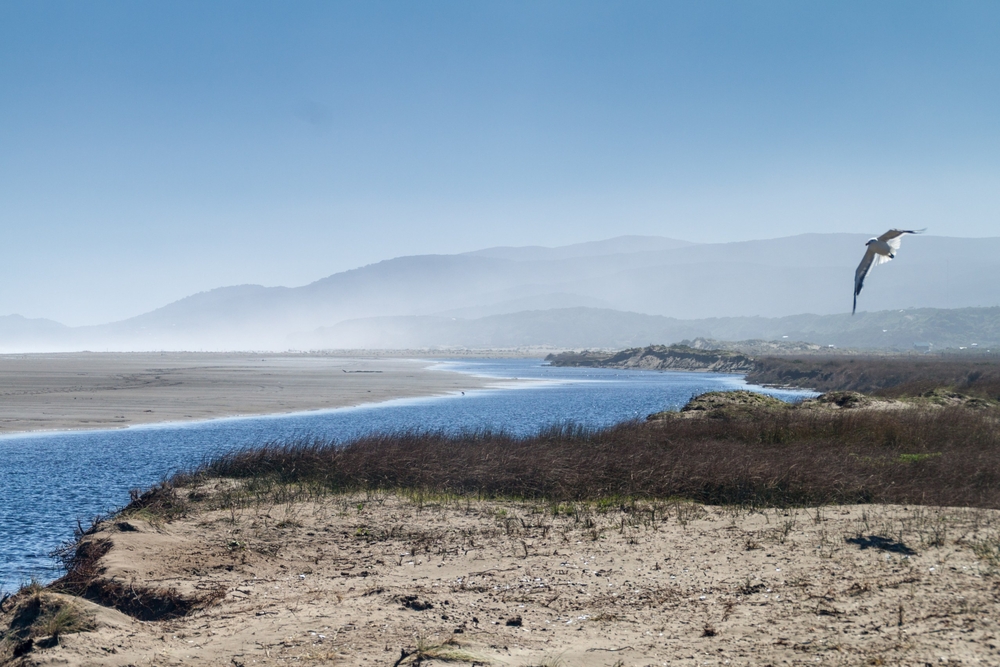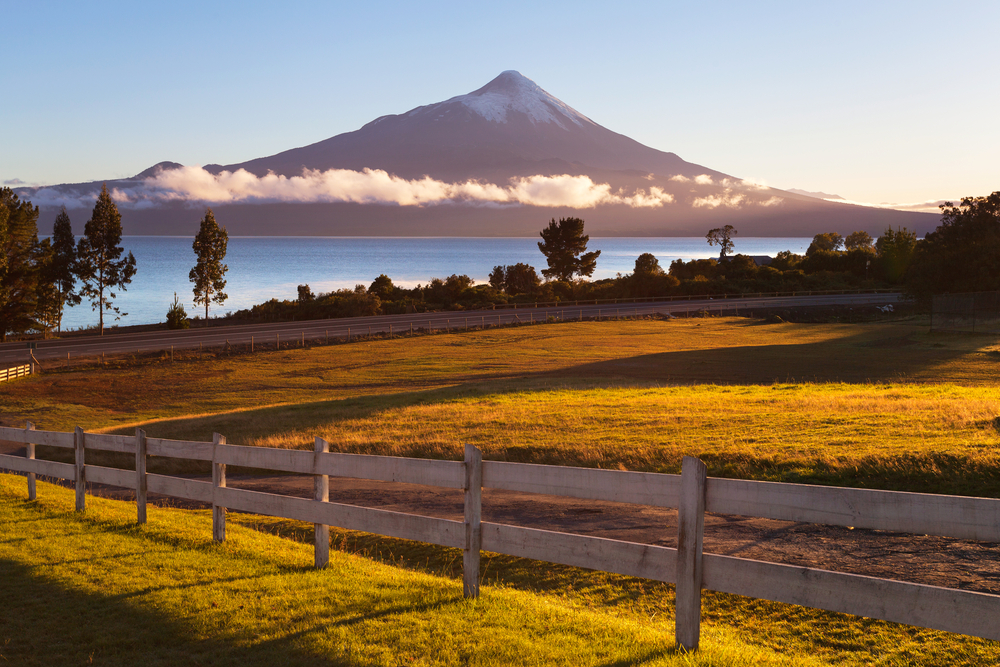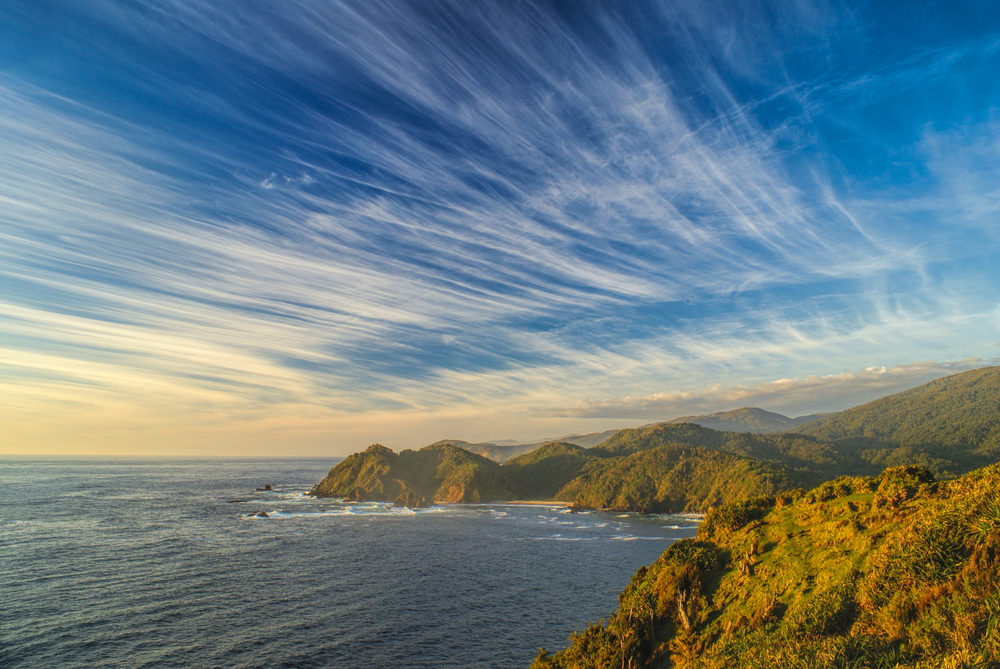Chiloe National Park is located on Chiloe Island just off the coast in southern Chile. The park rests on the western side of the island and encompasses an area of 166.4 square miles (431 sq km).
The majority of the park is accounted for by the mountain range running along the coastline parallel to the Andes Mountains. This range is known as the Chilean Coastal Range.
The perennial and evergreen trees such as the southern beech and alerce trees make up the Valdivian forest. Other ecosystems include the bogs and swamps that are located in the foothills. The Valdivian rainforest is the most prevalent forests in the park. This vegetation includes shrubs and climbing plants that add to the dense richness of the forests. Chilean rhubarb is another common part of the flora.
Chiloe Island and the Gulf of Corcovado are renowned because the region is one of four areas where blue whales come and nurse. The whales are commonly found in the fjords around the gulf. Along with the blue whales, the region is known for migrating finbacks, seis, southern-right and humpback whales. Although it is outside the park, some of the whales can be seen close to the shoreline on the south side of the island.
An abundance of sea lions can be found frolicking and sunning amongst the coastal sand dunes. There is also a colony of penquins which can be viewed by visitors. There is a diverse collection of coastal birds as well for the bird-watchers to enjoy.
The park also has two community regions which include the district of Ancud and the region of Abtao which includes the districts of Castro, Chonchi, and Dalcahue.
Photos
Things to See
Things To Do
Many visitors turn to the beach which is an excellent location for walking, horseback-riding, or fishing.
Chiloe National Park Trails
Hiking is one of the more popular activities and there are a fair number of trails to explore.
Park Protection
Chiloe National Park was created to protect the Valdivian temperate rainforest, the coastal swamps and bogs, and the foothills of the Chilean Coastal Mountain Range. It protects the coastal waters where the blue whale and other whale species nurse or migrate through.
Sources
- All Trails, Best Trails in Chiloe National Park, https://www.alltrails.com/parks/chile/los-lagos/parque-nacional-chiloe, retrieved January 2022.
- Chile Travel, Chiloe, https://www.chile.travel/en/where-to-go/destination/chiloe/, retrieved January 2022.
- Go Chile, Chiloe National Park, https://www.gochile.cl/en/chiloe-national-park/, retrieved January 2022.
- LAC Geo, Chiloe National Park, https://lacgeo.com/chiloe-national-park-chile, retrieved January 2022.
- Visit Chile Chiloe National Park, https://www.visitchile.com/en/chiloe-national-park/, retrieved January 2022.
